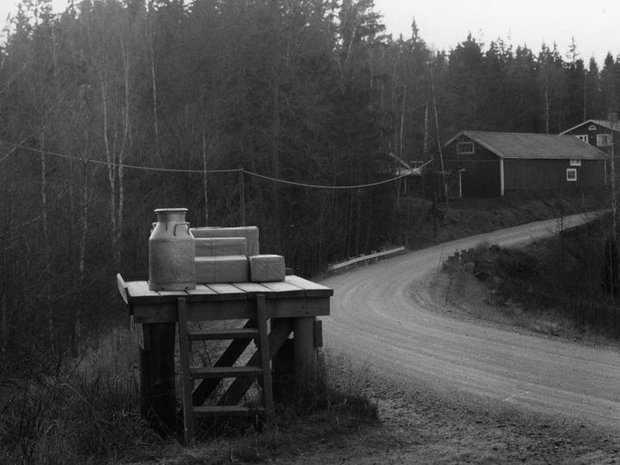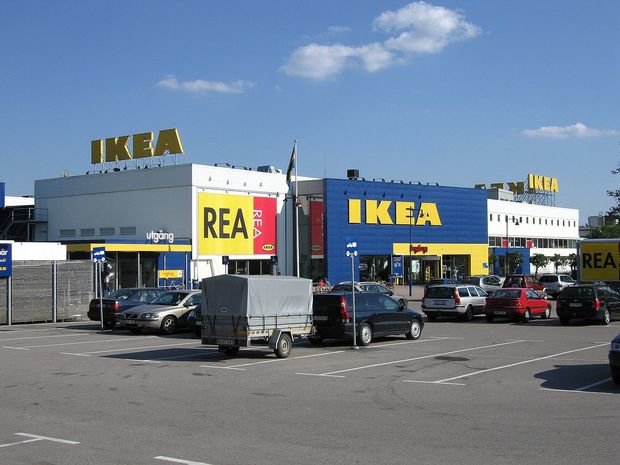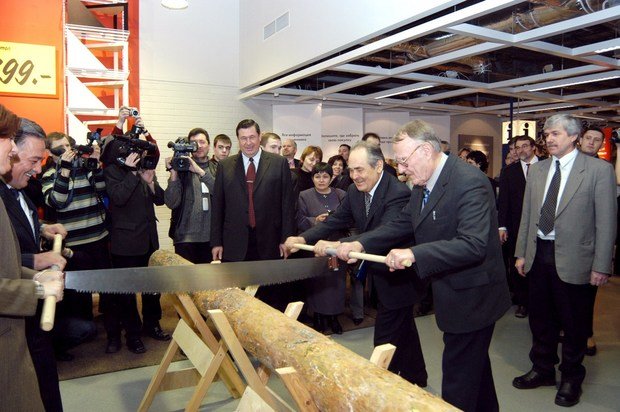''I gave Ingvar Kamprad an embroidered bathrobe as present, and he went through the city to the hotel wearing it''
How unscrewed chair leg and hot dogs helped to create the global business empire IKEA
The IKEA founder, Ingvar Kamprad, passed away on 27 January. He was a celestial from the entrepreneurial pantheon with his unique style. About such people they write books, study cases from their experience, and their quotes are spread in social networks. Meanwhile, in life and work Kamprad was an example of modesty and demanding attitude to himself, as if personifying the idea of The Protestant Ethic and the Spirit of Capitalism. Realnoe Vremya presents to the readers the stages of Kamprad and his company lives.
1. Business genius from Swedish backwoods, a fellow countryman of Astrid Lindgren
The birthplace of Ingvar Kamprad is a poor agricultural region of Småland, where world famous Swedish writer Astrid Lindgren is from. Kamprad was born in Småland in 1926, and here he died surrounded by loved ones. The Swedish province is known worldwide for the series of novels by Lindgren about the adventures of restless boy Emil i Lönneberga. It is no coincidence that children's playrooms in IKEA stores are called Småland, but I'll tell of the origin of original IKEA names a little later.
2. First money from resale of matches
As well as literary Emil, little Ingvar was constantly concerned about the question of pocket money. His natural tendency to trade helped him to resolve this issue. Kamprad said about himself that he was born with the ability to trade. His mother came from a family of the most famous traders in Älmhult. Her father, my grandfather, Carl Bernard Nilsson, owned the biggest store in town. Aged 5, Ingvar made his first trade transaction by reselling matches to neighbours. He ordered a pack of 100 matchboxes on sale in Stockholm and resold them at a higher price. The matches were followed by collected with his own hands berries, fish, and seeds.

3. An unscrewed chair leg can also become a breakthrough
The first IKEA store was opened in 1943 and traded different goods and petty commodity. In 5 years the range was added with furniture. But the real breakthrough was in 1956, when Kamprad's company mastered the sale of self-assembly furniture in flat boxes. Everything genial is simple, you just have to unscrew chair legs so a chair takes up much less space. Once Kamprad noticed how his employee was doing it and introduced the idea on an assembly line. The company saved on delivery and assembly of furniture. The buyer, who together with his family assembles a table or wardrobe, feels himself a master and becomes loyal to the brand.
4. The idea comes first
To enter the global market, Ingvar Kamprad's company demonstrated the same high degree of mobility and ergonomics as his products. Design is the key success of IKEA. The production involves more than 1,700 companies in the field that use exclusively local raw materials for the sake of saving. At the same time, Kamprad personally conducted the quality control. ''At the time, we arranged for him an exhibition of entrepreneurs for the products that are sold in his store. He received this contest with all his heart. He personally came to all the participants and asked the details why it was such cost and how it was done,'' Kamil Iskhakov (an IKEA opened in Kazan when he was taking the post of mayor of the city) told Realnoe Vremya.
5. National style for global market
Strange names of products sold in IKEA stores have long been a reason for jokes in Russia. In fact, their meanings are very obvious — it is the names of cities, villages and towns, as well as local flora and fauna. Similarly, residents of Sweden would guess about why the refrigerator is called Sviyaga if the brand was global. Although there are also some experiments in the naming of the company. For example, during the advertising campaign, Retail Therapy named part of the goods in accordance with popular Google searches.

6. Hot dogs work on marketing
Hot dogs that are sold near cash desks in each IKEA store is not just a point of catering, it is part of the marketing strategy. They need to show customers that in the store absolutely everything is cheaper than in other places, even a sausage roasted with bread. Ingvar Kamprad personally insisted on a hot dog cost 5 crowns in IKEA, although in Sweden they cost 10-15 crowns. Since then, people began to call all cheapest products as hot dogs.
7. Austerity and economy as the basic principle of corporate ethics
IKEA employees do not fly in business class and do not use expensive executive cars. Ingvar Kamprad personally set the example. Kamil Iskhakov still cannot forget one of the meetings with the modest billionaire. ''About modesty Kamprad they tell a lot, but I have seen this personally. When we were preparing the store opening in Kazan, it was scheduled a meeting in Oslo. I stayed in a middle class hotel and asked Ingvar where I could come to discuss business issues. He insisted that he would come to me himself and we would talk in the lobby. It turned out that he stayed in the cheapest hotel and it was awkward to invite me there. In the end, I gave him an embroidered bathrobe as a present, and he was wearing a very cheap, old and cold coat. He put on the bathrobe and went through the city to his hotel,'' the ex-mayor of Kazan recalls.
8. The support of the Tatar language
Realnoe Vremya already published a story about how in Kazan IKEA store there appeared signs in the Tatar language. Initially, all signs were only in Russian. Journalist Rimma Bikmukhametova turned to local leadership of the company in order to supplement them with plates in another state language of Tatarstan, but she was denied. Through the Finnish Tatars she had found the address of Kamprad and wrote him a letter. Within a month all the inscriptions and signs were translated into the Tatar language.

9. The opening of IKEA became a driver of trade in Kazan
IKEA opened in Kazan ahead of most Russian cities, on 22 March 2004. Kamil Iskhakov is sure that it was a decisive step for the development of civilized trade in the city. ''If we hadn't established a contact with Ingvar Kamprad, the level of trade in Kazan would have been lower. He just never went on resolving issues. He had to see an economic viability of a project. In this case, I had more opponents than allies. And if we failed to bring them to Kazan, other global companies would not have opened here, too. But we succeeded, and now Kazan looks like a city with civilized trade infrastructure. Along with IKEA there came Mega, they were followed by METRO Cash and Carry and other global companies.''
10. The most expensive trade centre in Tatarstan
According to Realnoe Vremya, Mega is the most expensive shopping area in Kazan. In 2016, Ingvar Kamprad and his sons owned areas at 8,4 billion rubles.